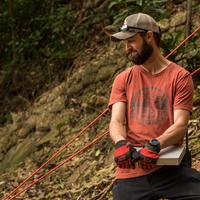- University of Wyoming, Anthropology, Alumnusadd
- My research is focused on how inequality and marginalization impact the human body. I began my career in forensic anthropology and transitioned to bioarchaeology, specifically focusing on the colonial period in Peru. My doctoral research focused on the remains of individuals who were treated and ... moreMy research is focused on how inequality and marginalization impact the human body. I began my career in forensic anthropology and transitioned to bioarchaeology, specifically focusing on the colonial period in Peru. My doctoral research focused on the remains of individuals who were treated and died at an indigent hospital in New Orleans, dating from the mid-1800s to the early 1900s. These individuals’ remains showed osteological signs of poor health and generalized stress and also bore cutmarks characteristic of postmortem dissection and experimentation. Part of my work in Peru and Louisiana is an exploration of the visibility of epidemic diseases in the historic and bioarchaeological record. My research reconciles historical records—with all of their silences and omissions—with bioarchaeological datasets, to provide a more complete picture of marginalized individuals from the past. Currently, I am the Assistant State Physical Anthropologist for the State of Washington and am responsible for consultation and analysis of non-forensic human skeletal remains.edit
- Melissa S. Murphyedit
In death, bodies that were autopsied or used for medical dissection or experimentation are transformed from individuals into specimens, their identities and personhood removed. This destructive act was commonplace across the United States... more
In death, bodies that were autopsied or used for medical dissection or experimentation are transformed from individuals into specimens, their identities and personhood removed. This destructive act was commonplace across the United States dur- ing the 19th century for the sake of medical advance- ment. Becoming a cadaver (anatomization) was typi- cally reserved for the poorest individuals who passed away in almshouses and indigent hospitals. Charity Hospital, which operated from the 18th century until Hurricane Katrina in 2005, served New Orleans’s indigent population. The remains of many individu- als who died at the hospital during the 19th century were used for medical dissection, experimentation, and autopsy. From two collections of skeletal remains associated with Charity Hospital’s second cemetery, this study explores the skeletal indicators of anatomi- zation and how these individuals’ treatment in death speaks to larger trends of marginalization of the poor during this time.
Research Interests:
The physiological toll of poverty-from inadequate nutrition, higher disease loads, dangerous and taxing occupations, to limited health care-constitutes a form of structural violence. This violence is often embodied on skeletal tissues as... more
The physiological toll of poverty-from inadequate nutrition, higher disease loads, dangerous and taxing occupations, to limited health care-constitutes a form of structural violence. This violence is often embodied on skeletal tissues as signs of systemic biological stress. Here, we explore the skeletal manifestations of systemic
Research Interests:
The physiological toll of poverty-from inadequate nutrition, higher disease loads, dangerous and taxing occupations, to limited health care-constitutes a form of structural violence. This violence is often embodied on skeletal tissues as... more
The physiological toll of poverty-from inadequate nutrition, higher disease loads, dangerous and taxing occupations, to limited health care-constitutes a form of structural violence. This violence is often embodied on skeletal tissues as signs of systemic biological stress. Here, we explore the skeletal manifestations of systemic
